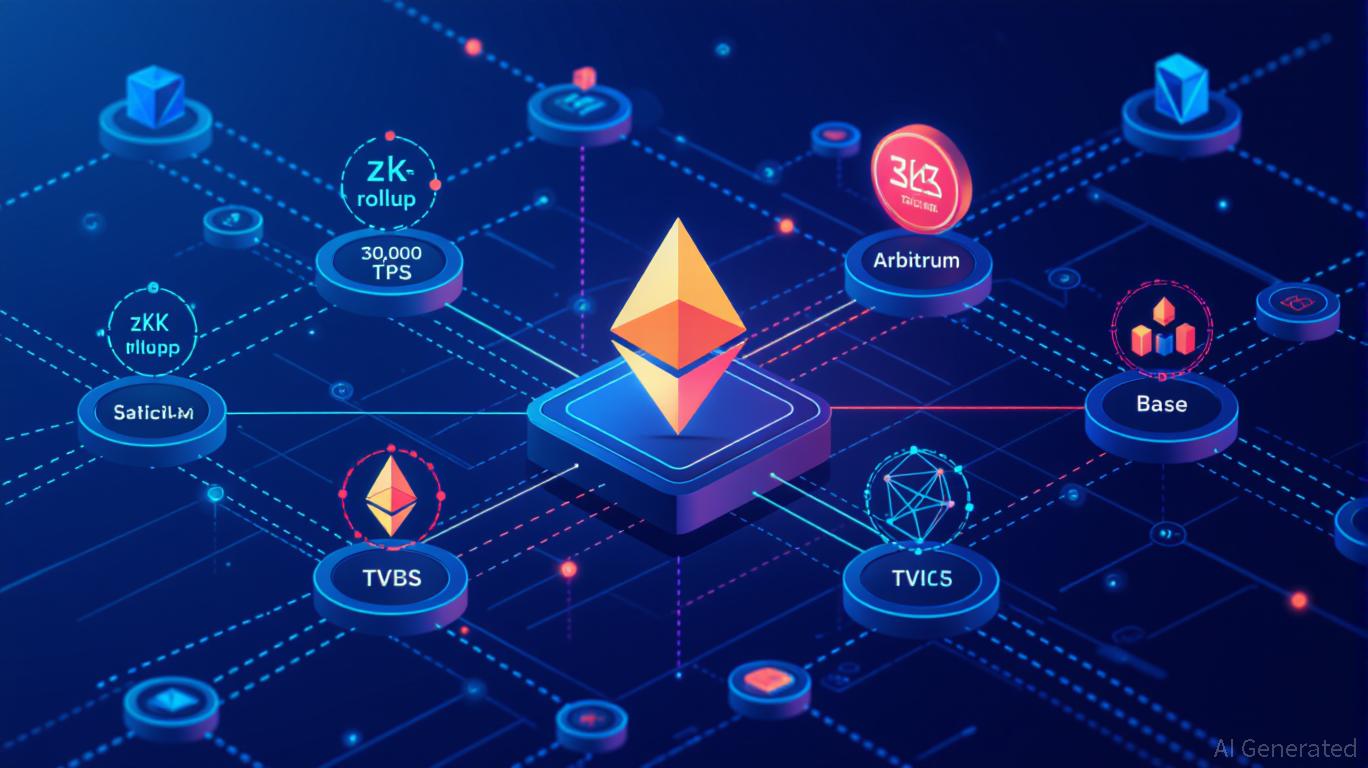Astar 2.0: Redefining Web3 Infrastructure for the Next Generation
- Institutional investors are increasingly allocating to digital assets, with Astar 2.0 emerging as a key platform due to its scalability and interoperability. - Astar 2.0’s hybrid architecture and partnerships with global enterprises like Casio and Sony enhance its institutional appeal through real-world applications. - The platform’s on-chain governance and enterprise-grade security align with institutional priorities, despite challenges in transparent communication and competition.
Astar 2.0’s Technological Advantages: Scalability and Interoperability
The hybrid chain structure of Astar 2.0, known as Astar Link, marks a significant advancement in blockchain scalability. It enables smooth connectivity between
The Staking 2.0 framework on Astar further strengthens its attractiveness. By offering a unified account system that works with both Wasm and EVM contracts, Astar lowers the entry threshold for DeFi users and promotes a more inclusive staking environment, according to the Bitget analysis. This approach meets institutional requirements for strong governance and risk controls, as on-chain governance reduces dependence on centralized authority, as the Bitget analysis points out.

Strategic Alliances: Connecting DeFi with Traditional Sectors
Astar 2.0’s appeal to institutions is further enhanced by its collaborations with major global corporations. Partnerships with leading Japanese companies such as Casio, Mazda, and Japan Airlines are bringing blockchain technology into established industries, from logistics to customer loyalty, as outlined in the Bitget analysis. Collaborations with Sony, Toyota, and Startale are also pushing DeFi into the automotive and entertainment fields through real-world asset (RWA) applications, as detailed in the Bitget analysis. These alliances not only demonstrate Astar’s practical value but also provide measurable use cases for institutional investors to scale.
Cross-chain liquidity solutions like Chainlink CCIP further strengthen Astar’s offering by allowing assets to move effortlessly between networks such as Ethereum, Polkadot, and the Superchain, as explained in the Bitget analysis. This level of interoperability is crucial for institutions aiming to diversify across multiple blockchains without compromising efficiency.
Institutional Investment Drivers: Compliance and Sustainable Growth
Compliance and governance are top priorities for institutional investors, and Astar 2.0 is designed with these needs in mind. Its on-chain governance system enables community involvement in key decisions, reducing the risks tied to centralized management, according to the Bitget analysis. Moreover, Astar’s emphasis on enterprise-level security and regulatory compliance makes it a strong candidate for institutions navigating complex regulatory environments.
Although specific investment amounts for Astar 2.0 in Q3 2025 have not been disclosed, the platform’s strategic alliances and improved tokenomics have drawn interest from venture capital. For instance, SparkLabs, a VC firm based in Seoul, led a confidential Seed round for ASTAR in December 2023, as mentioned in a
Obstacles and Future Prospects
Despite its advantages, Astar 2.0 still faces hurdles. The lack of official announcements regarding institutional partnerships for 2025, as pointed out in a
For institutional players, the central question is whether Astar 2.0 can sustain its progress in deploying real-world solutions. Should the platform continue to achieve its development milestones—especially in boosting TPS and deepening enterprise partnerships—it could become a foundational element in institutional Web3 strategies.
Summary
Astar 2.0 signals a new era in blockchain infrastructure, merging advanced scalability with practical enterprise applications. As more institutional investors look to engage with next-generation protocols, Astar’s hybrid design, strategic alliances, and governance structure make it a formidable option. While challenges persist, the platform’s alignment with institutional priorities—such as compliance, interoperability, and real-world use—positions it as a promising long-term investment.
Disclaimer: The content of this article solely reflects the author's opinion and does not represent the platform in any capacity. This article is not intended to serve as a reference for making investment decisions.
You may also like
Vitalik Buterin Supports zkSync and Shares Insights on the Evolution of Scalable Ethereum Solutions
- Vitalik Buterin endorsed zkSync as Ethereum's key scalability solution, praising its ZK-rollups for security and 30,000 TPS capacity post-Atlas upgrade. - The endorsement drove ZK token's 120% surge to $0.74, attracting 30+ institutions evaluating zkSync's enterprise-focused Prividium. - zkSync faces competition from Arbitrum ($16B TVL) and Base (Coinbase-backed), but gains traction via institutional partnerships and privacy-centric design. - Investors must balance zkSync's technical innovation with Arbi

Zcash Halving and Its Impact on the Privacy Coin Market
- Zcash's November 2024 halving cut block rewards by 50%, reducing annual inflation from 12.5% to 3.5% by 2025. - This supply shock drove a 92% price surge, boosting Zcash's market cap to $5 billion by late 2025. - Institutional adoption and privacy upgrades, including zk-SNARKs and multisig tools, shifted investor sentiment toward strategic interest. - Future halvings and regulatory risks will test Zcash's ability to balance scarcity with innovation in evolving markets.

Zcash (ZEC) Value Rises as Interest in Privacy Coins Grows Again
- Zcash (ZEC) surged 1,172% in 2025, reaching $9.4B market cap as institutional adoption and privacy-focused upgrades drove its rise to 14th-largest cryptocurrency. - Institutional backing, including $137M from Grayscale and Arthur Hayes’ endorsement, highlights ZEC’s appeal as a privacy-centric alternative to Bitcoin . - Regulatory clarity from U.S. laws and GDPR-compliant innovations like Kachina VM in Midnight ecosystem bolster ZEC’s institutional viability. - Technical upgrades like ephemeral addresses

ICP Value Jumps 30% Following Significant Network Update and Growing Interest from Institutions
- ICP's 30% price surge follows a November 2025 network upgrade introducing Caffeine, an AI tool for Web3 development, boosting on-chain AI integration. - Institutional adoption grows via partnerships like HashKey-Kraken, while ICP's DeFi TVL hit $237B, though DApp engagement fell 22.4% in Q3 2025. - Experts highlight Caffeine's accessibility benefits but caution over missing technical upgrades in scalability and storage, raising questions about long-term viability. - Competition from Ethereum and Solana ,
